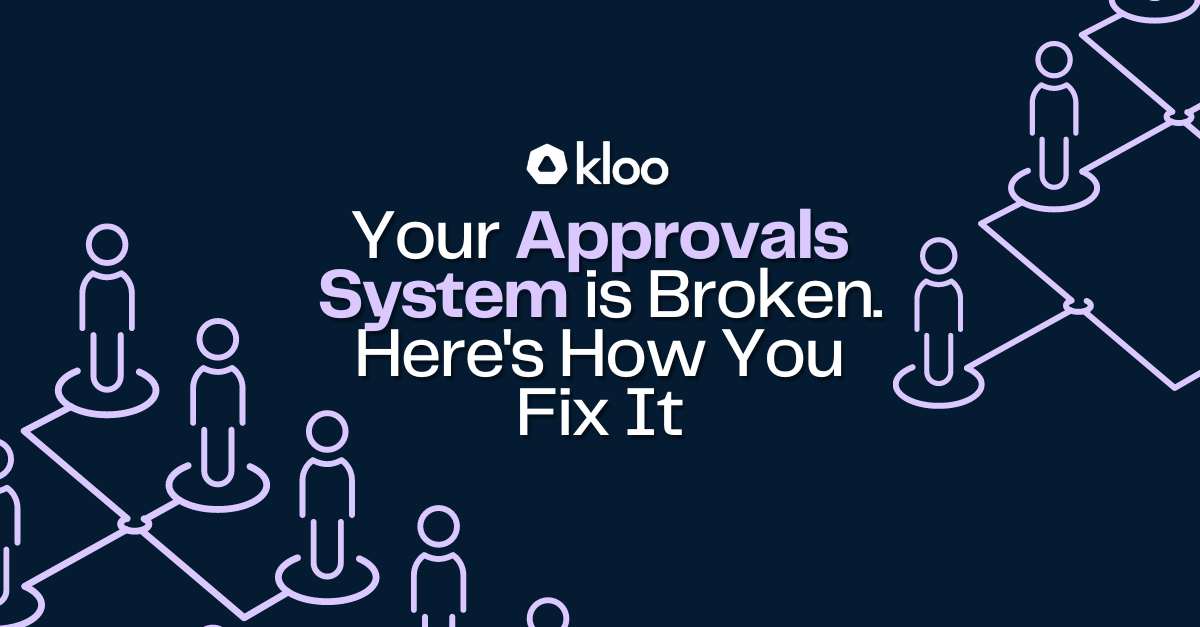A Guide to PO Approvals in 2024
Purchase orders (POs) are a vital tool for maintaining financial control within an organisation, ensuring that every purchase is documented, tracked, and approved before any money is spent. The approval process is crucial, involving various stakeholders to verify and authorise expenses, thereby preventing unauthorised spending and ensuring budget adherence.
Despite their importance, POs are often disliked and bypassed by employees, leading to what is commonly known as maverick spend—unapproved purchases that can disrupt financial management. Many of these issues stem from slow and inefficient approval processes that frustrate employees and lead to non-compliance. In this blog, we will explore how to streamline PO approvals in 2024, offering strategies for purchase management that not only maintain control but also gain employee support.
Common Issues With PO Approvals
-
High-Friction Approval Process: Approvers often face a cumbersome process that requires logging into a platform and clicking multiple buttons to approve a purchase. Any amount of friction in this process can significantly impact approval speed and overall efficiency.
-
Lack of Context: When purchase requests lack essential information—such as historical spending with a supplier or the impact on budget compliance—approvers are either forced to approve without necessary context or spend additional time searching for data. This can lead to uninformed decisions and delays.
-
Too Many Approvers: It is crucial to tailor the approval workflow to the specific spend. For example, in a large company, if all spending in the marketing department follows the same approval process, the VP of Marketing could become overwhelmed. Tailored approval workflows, based on factors such as price, department, and location, ensure that only the necessary individuals are involved in the approval process, adhering to the company's procurement protocol and improving efficiency.
-
Delayed Responses: Approvers may not always prioritise PO approvals, leading to delays. This can slow down procurement processes and affect project timelines. Automated reminders can help prompt timely responses without having to manually chase approvers.
Building Approval Workflows That Actually Flow
The key to having faster approvals lies in three key areas:
1. Improving Approver UX
-
Email-Integrated Approvals: This feature allows approvers to receive, review, and respond to PO requests directly from their email. By integrating into people's daily workflows of checking their email and eliminating the need to log into a separate platform, organisations can cut average approval times.
2. Automating Finance Team Admin
-
Automated Assignment of Approvals: By setting up rules that automatically assigns purchase requests to approval workflows based on specific criteria such as department, project, or cost. This means that only the necessary stakeholders review each spend, meaning senior approvers aren’t overwhelmed with requests that don't really require their input.
-
Automatic Reminders: One of the most common delays in the approval process is simply due to approvers forgetting to review requests. Implementing automated reminders can keep PO approvals on track without the need for manual follow-ups from the finance team.
3. Data-Driven Decisions
- Data For Approvers: Kloo leverages artificial intelligence to collate and provide essential data to approvers when making decisions about approving spend. This data encompasses budget adherence, past spending patterns, supplier information, and notifications of potentially duplicate expenses, empowering approvers to make quick and informed approvals.
- Data For Finance Teams: Analytics play a crucial role in identifying bottlenecks and understanding approval dynamics within an organisation. With robust analytics, finance teams can pinpoint who the slow approvers are, assess the average time taken for approvals, and develop strategies to enhance overall efficiency. This data-driven approach enables targeted interventions that can dramatically improve the speed and reliability of PO approvals.
The Bottom Line
Purchase Orders (POs) are indispensable for maintaining financial control within an organisation, ensuring every purchase is meticulously documented, tracked, and authorised before any expenditure occurs. However, the traditional PO approval process, fraught with inefficiencies and complexities, often leads to employee frustration and maverick spend—unauthorised purchases that can disrupt financial management.
By addressing common issues such as high-friction processes, lack of context, and excessive approval layers, organisations can streamline their PO approvals in 2024. Implementing user-friendly, automated, and data-driven solutions not only enhances efficiency but also garners employee support, ultimately leading to a more compliant and financially sound procurement process.
To explore more of Kloo's automation solution towards purchase orders, check out our Purchasing Copilot module.
Let's get started

